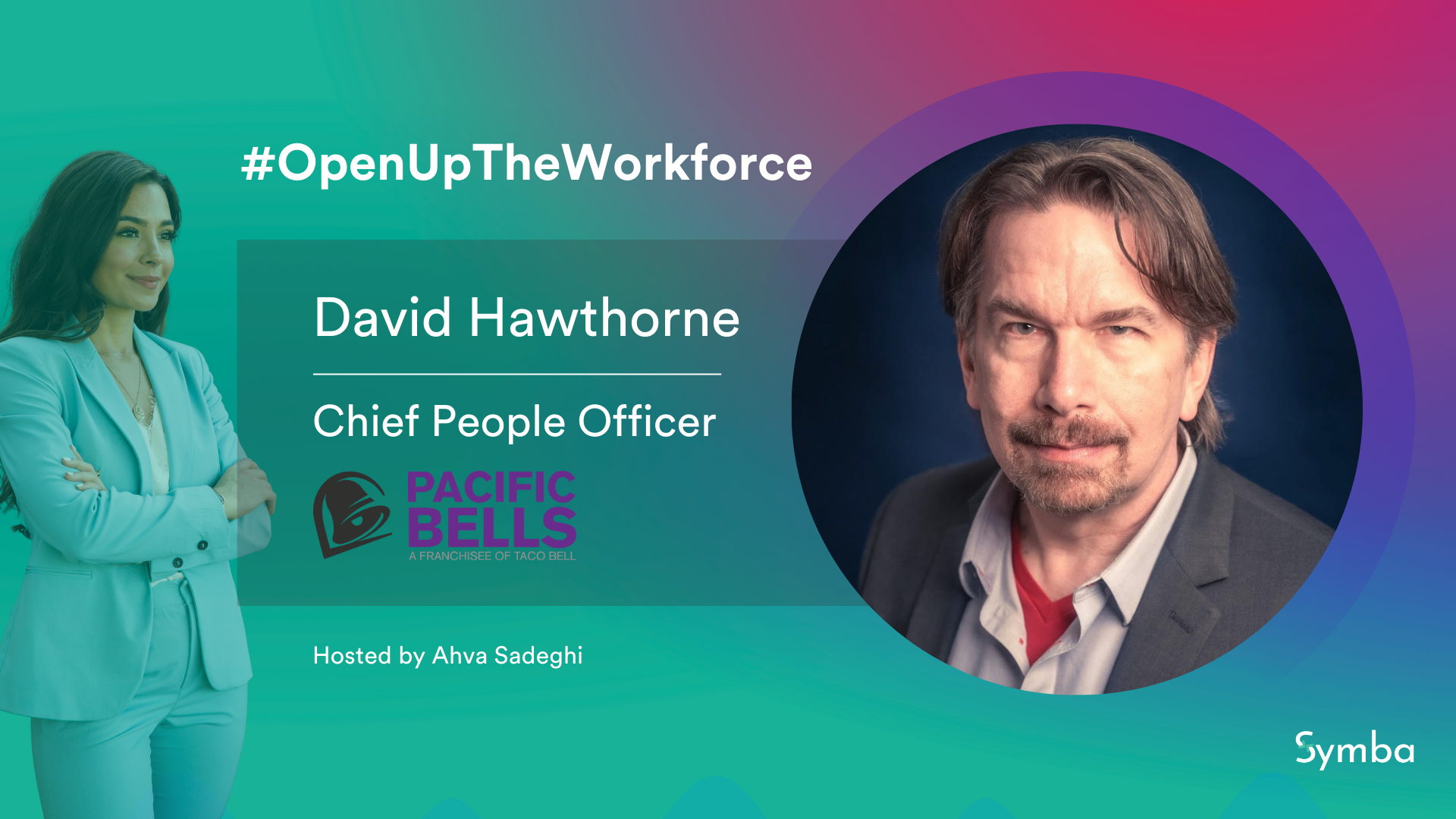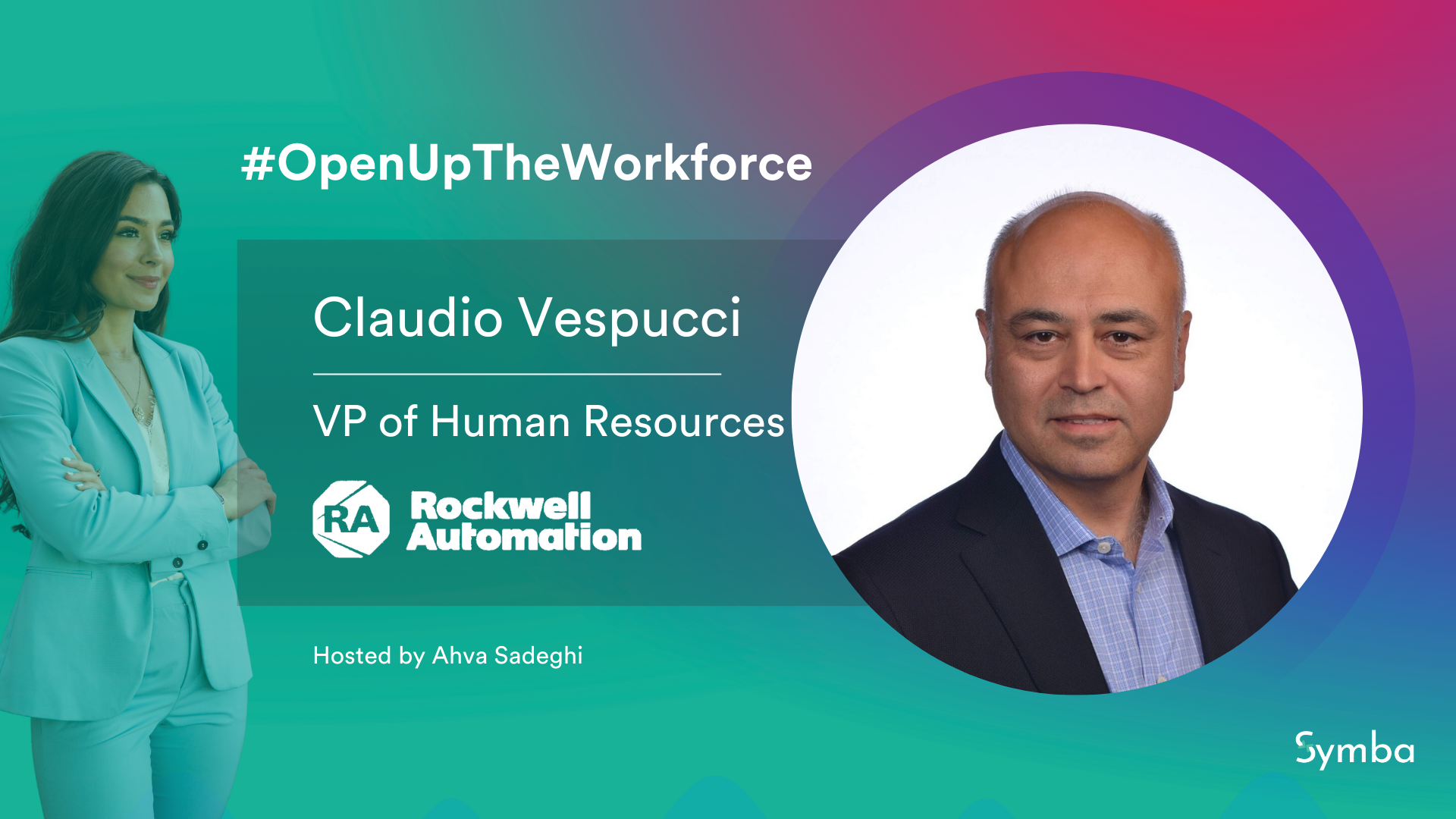Presented by Symba, #OpenUpTheWorkforce interviews feature executives advancing inclusion, diversity, and equity for the future of work. In these short audio-only episodes, we talk with the top about what it takes to develop and implement inclusive processes.
In this episode of #OpenUpTheWorkforce, Lorraine Hariton, President & CEO at Catalyst, shares how their organization is leading a powerful community of partners to create workplaces that work for women. Listen here.
The Catalyst Awards
Catalyst started the Catalyst Award in 1987 and has since had 108 recipients. The award highlights companies that have done great work to create an environment where women and everyone can thrive. This year the award winners are The Hartford and the University of Pittsburgh Medical Center. Both are major employers and have hosted holistic programs that advance women in the workplace. For example, from 2010 through 2021, The Hartford has led an initiative to increase their representation of women in the C-suite and executive levels from 18% to 43% over that 12-year period of time. Representation of women of color in SVP and above positions have increased from 0 to 12%.
Catalyst’s work and their powerful community of partners
Historically, Catalyst has helped women with college degrees advance to leadership positions. They are now spearheading an initiative to address the needs of frontline workers, like those at Carnival Cruises, Target, Dow Chemical, Procter & Gamble, and more. In addition to research and consultancy, Catalyst brings together a virtual ERG community they call Energize to strategize together four times a year. They keep the collaboration going year-round through an online portal. Catalyst also leans on a board of directors of CEOs at major companies, and a board of advisors made up of Chief Diversity Officers and CHROs, to help define their direction and strategy.
The importance of early introductions for girls in STEM
Lorraine emphasizes that it is important, especially in the STEM fields, to influence girls early on. She adds that it’s also critical to keep them engaged with the field at every step of the way as they move into the mid-stage of their careers. Biological sciences have a relatively decent representation of women but experience a leaky pipeline, and that industry serves as one example of the STEM fields that require continuous career engagement, development, and mentorship opportunities in order to retain and promote women. Lorraine created the Global STEM Alliance and its 1000 Girls, 1000 Futures program, a virtual and year-long mentoring initiative that pairs young women all over the world who are in middle school and high school with women who are early to mid-career STEM experts so that they can get a better sense of what STEM careers are like. She shares her own story about a calculus professor that changed her life by encouraging her to study computer science, which pushed her to transfer from a college in upstate New York to Stanford.
What can leaders do to mitigate bias in internships and apprenticeships?
Catalyst does training on conscious and unconscious bias, as well as allyship. They’ve created the MARC program – Men Advocating Real Change – that teaches men who are in positions of power and influence to understand biases that they bring based on their lived experiences and their childhood, and helps them become advocates for change so that they can be vocal about interrupting bias. Lorraine expands that their “research shows that, you know, culture of silence where people don't have the ability to interrupt bias is something that causes more harassment and more bias in general. So, you know, I think it’s important that people have the training and awareness so that they can be advocates.” She shares the example of how benevolent sexism can appear when women are up for promotion, and how it comes out of a protective kindness, but in essence is a demonstration of bias.
The pay ratio – understanding the barriers and solutions to equal pay
Catalyst’s recent CEO Champions for Change report surveyed 70+ CEOs and the vast majority of Champion companies (82%) conducted at least one pay equity review within the last three years. This indicates a strong step in the direction of equal pay, but still in 2022, women earned an average of 82% of what men earned. But Lorraine shares there are more barriers at large to achieving pay equity:
“[It] has to do with the pyramid, the fact that there's more women at the bottom and there's less at the top, and that's affecting this ratio of how much men are making versus women. And that's something that follows women throughout [their careers]. Women start making less and they get promoted less and they don’t advocate as much and by the time you get to the top, there's really big inequities. There's also inequities in the types of jobs that men and women get paid for, even at the same level of a corporation like the men tend to be more line revenue oriented where they get bigger bonuses, the women tend to be more in the staff jobs.”
Lorraine shares that the pay ratio is the golden measure that reflects everything they try to do to reach equal pay. To achieve this, she proposes the solution is to make sure women are moving through the pipeline. That involves a few efforts like 1) building a culture that allows everyone to thrive, 2) introducing or updating policies and practices that recognize that women potentially need more flexibility (i.e. adding paternity leave, so women aren’t the only ones working 30 hours a week and partners can split the responsibility better. Or not requiring people to disclose their previous salary, so women have negotiating power), and 3) training women to negotiate better, teaching them it’s not aggressive, it’s assertive. These efforts remove bias from the hiring and promotions processes and empower women.
“Senior leaders set the tone at an organization”
A lot of the CEOs that Catalyst works with consider DE&I to be part of their values, and part of what's going to make them competitive to attract and retain the best talent and to improve their decision making.
Lorraine shares the progress she’s witnessed in her time at Catalyst; “I started this job four and a half years ago and at that time, the [percentage] of women who were running Fortune 500 companies was 4.8%. Today, it's at 10.8%. So it more than doubled over that almost five year period of time. And that's progress. Now, it's not good enough, but it's progress.”
What do leaders need to do to #OpenUpTheWorkforce?
- You've got to have commitment at the top, and you've got to put the policies and practices together that are required.
- You need to implement cultural change.
- You need to measure and hold people accountable.
Lorraine wisely encourages, “whether it's in our partner organizations or at Catalyst itself, this is hard work. You know, this is something that you have to be committed to, changing culture, it's changing practices and it's overcoming our own biases. So we have to be aware and committed and do it across the whole organization.”
About Lorraine Hariton
Lorraine Hariton is President & CEO of Catalyst, a global nonprofit working with the world’s most powerful CEOs and leading companies to help build workplaces that work for women. Catalyst’s vision and mission have long been a passion for Lorraine. She is honored to lead the organization at this crucial time and help write the next chapter in its 60- year legacy of accelerating positive change for women.
Lorraine’s extensive career includes senior-level positions in Silicon Valley as an entrepreneur and executive. She began her career at IBM, has served in the Obama administration at the Department of State, and developed the Global STEM Alliance at the NY Academy of Sciences. She has been involved in women’s leadership initiatives throughout her career, serving on the boards of UN Women Global Innovation Coalition for Change, the Stanford Clayman Institute for Gender Research, and Watermark.
Lorraine holds a BS in Mathematical Sciences from Stanford University and an MBA from Harvard Business School.
.
.
.
Are you an executive leader increasing access to jobs and wealth creation? Request to be featured and show us how you #OpenUpTheWorkforce.





